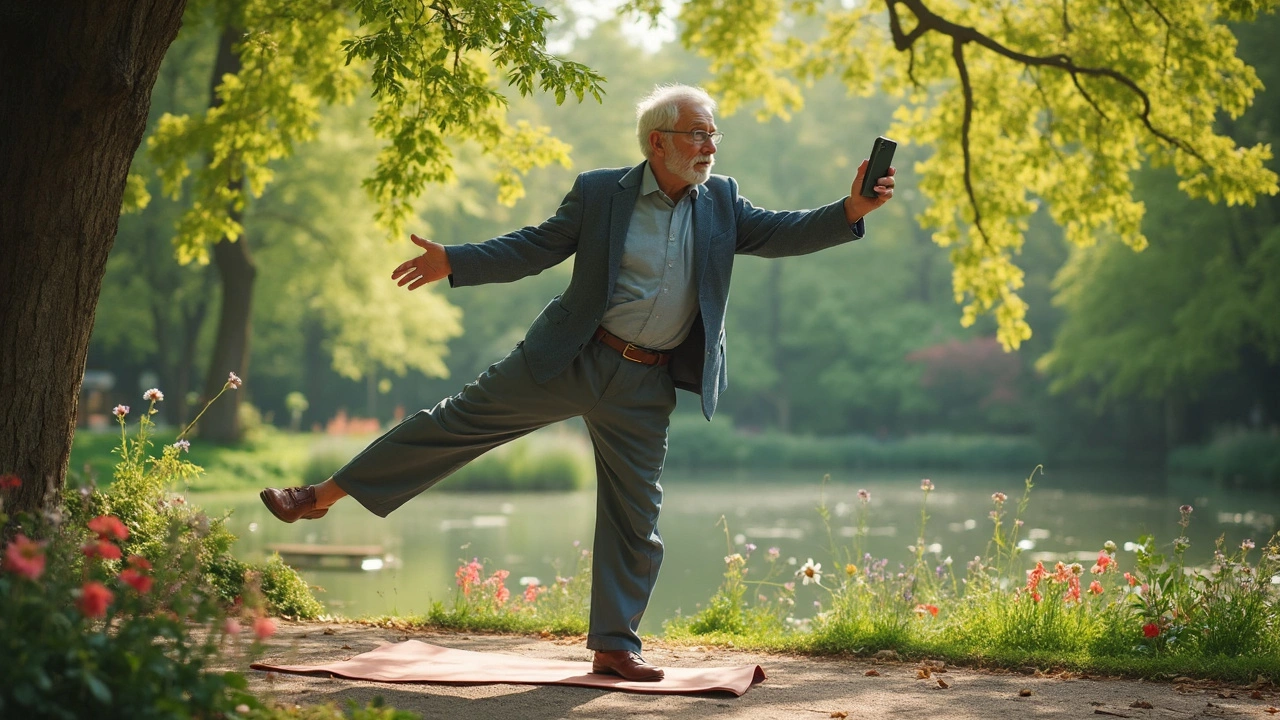Balance Exercises for Seniors – Simple Moves to Boost Stability
Feeling a little wobbly after a long day? You’re not alone. Many older adults notice their balance isn’t what it used to be, and that can turn everyday tasks into a risk. The good news? A few minutes of targeted moves each day can make a big difference. Below are practical exercises you can start right now, right at home.
Why Balance Matters for Seniors
Strong balance helps you walk confidently, get up from a chair without a shake, and keep your independence. It also lowers the chance of falls, which are a leading cause of injury in seniors. When you improve balance, you’re training the muscles, joints, and brain together – a win‑win for overall health.
Three Easy Moves to Try Today
1. Heel‑to‑Toe Walk
Find a hallway or clear space about 5‑10 metres long. Place one foot directly in front of the other, making the heel of the front foot touch the toe of the back foot. Walk slowly, keeping your gaze forward. If you need support, hold onto a sturdy rail. Do three rounds, rest, then repeat. This simple walk challenges your foot placement and core stability.
2. Single‑Leg Stand
Stand near a sturdy chair or countertop. Shift your weight onto your right foot, lift your left foot a few inches off the ground, and try to hold for 10 seconds. Switch sides. If 10 seconds feels hard, start with 5 seconds and add time as you get stronger. Use the chair for balance only if you start to wobble – the goal is to rely less on it over time.
3. Sit‑to‑Stand Repetition
Use a sturdy chair without arms. Sit tall, feet hip‑width apart, and stand up without using your hands, then sit back down slowly. Perform 8‑12 reps. This move builds leg strength and coordination, both crucial for steady walking. If standing straight is tough, place your hands lightly on the chair for the first few reps, then try to wean off.
Do these three exercises 3‑4 times a week. Consistency matters more than intensity. As you feel steadier, add challenges – like closing your eyes for a few seconds during the heel‑to‑toe walk or extending the single‑leg hold by 5 seconds each week.
Safety tip: always warm up with gentle marching in place for 2‑3 minutes. If you ever feel dizzy or pain, stop and sit down. Talk to your doctor before beginning any new routine, especially if you have joint issues or heart concerns.
Tracking progress can be as simple as noting how long you can hold the single‑leg stand or how many sit‑to‑stand reps you can do without rest. Write these numbers in a notebook or on your phone. Seeing improvement over a few weeks is a huge confidence boost.
Remember, balance isn’t just a physical skill – it’s also about the brain learning to react. Incorporate activities like Tai Chi or gentle dancing when you feel ready. They add a fun, rhythmic element that trains both mind and body.
Ready to give it a try? Pick a quiet corner, set a timer for 10 minutes, and run through the three moves. You’ll finish feeling steadier and more in control. Keep at it, and notice how everyday tasks like reaching for a shelf or stepping onto a curb become smoother. Your body will thank you, and your confidence will grow with each session.

The Best Balance Exercise for Seniors: Finding Stability at Any Age
Maeve Larkspur Feb 11 0Discover the ultimate balance exercise for seniors that can be enhanced through the use of fitness apps. This long-read explores how this exercise helps maintain stability, reduce falls, and improve overall well-being. With real-world tips, fun facts, and guidance on leveraging technology, seniors can gain confidence and enjoy a more active lifestyle. Whether through guided apps or traditional methods, enhancing balance can be both simple and transformative.
More Detail